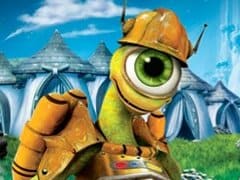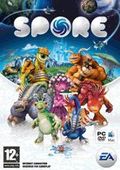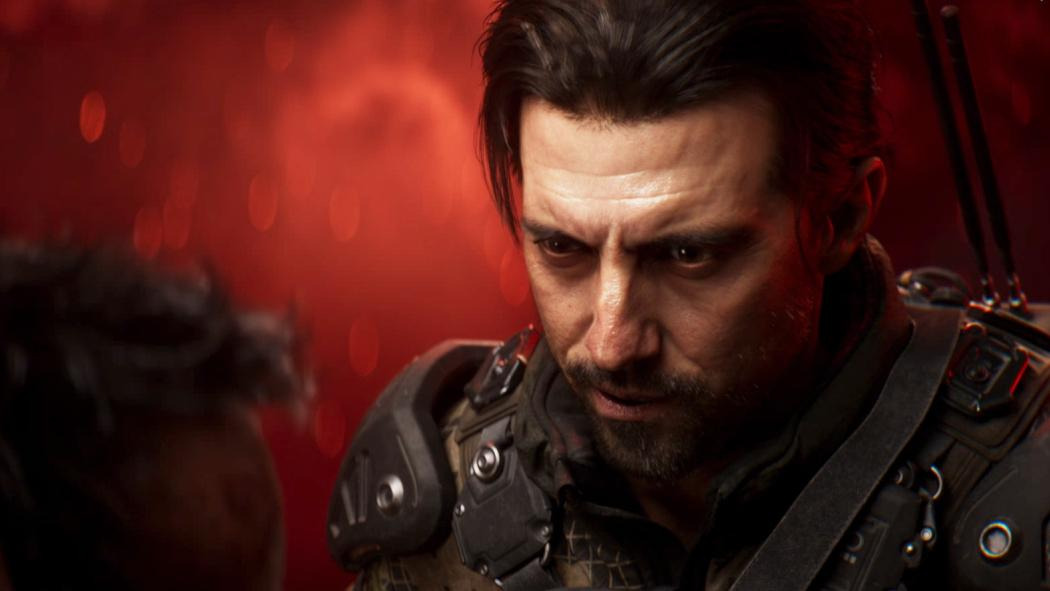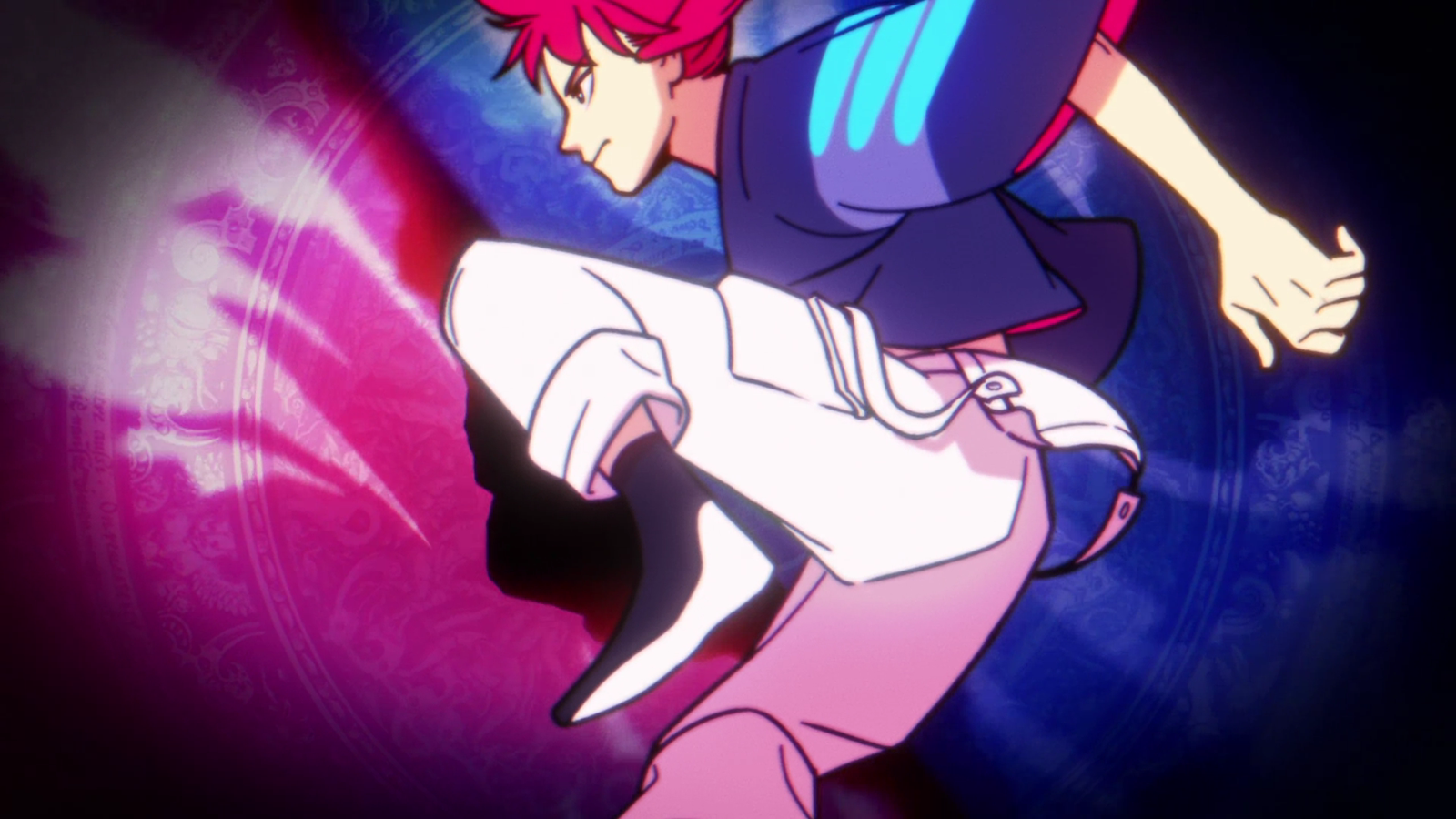You can trust VideoGamer. Our team of gaming experts spend hours testing and reviewing the latest games, to ensure you're reading the most comprehensive guide possible. Rest assured, all imagery and advice is unique and original. Check out how we test and review games here
As far as video games go, ambition doesn’t get much bigger than attempting to simulate the entire process of genetic evolution. It’s a goal so lofty that it almost beggars belief – but that’s exactly what Will Wright and the Maxis team have set out to do. But then, you probably knew that already, didn’t you? People have been desperate to get Spore on their hands for a long time now; the big question is this: did they pull it off?
The answer, as most people will be glad to hear, is mostly “yes”. With its highly original concept, five distinct game modes and a potentially limitless degree of user customisation, Spore offers an invigoratingly unusual gaming experience. However, it is also important to understand that the game also carries quite a few flaws – some of them minor, some of them seriously aggravating. Most people will be able to overlook these hiccups and just enjoy the fun on offer, but it’s also true that some of you are going to find your Egg of Expectation smashed upon the Kitchen Floor of Disappointment. In other words, it’s important to get the lowdown and to think carefully before you fork out your hard-earned cash.
When you boot up Spore for the first time, you’re given a choice of three options: Play, Create or Share. The second of these lets you play with the game’s many content-building tools, while the third opens up the game’s online community – more on this later. Taking the first option summons a map of the universe, a gateway to your saved games that operates much in the same way as the neighbourhood did in that previous Maxis hit, The Sims. Clicking on an “empty” planet allows you to give it a name, then it asks you to pick a stage of evolution. Eventually you’ll be able to plunge straight into any one of Spore’s six sections, but the first time you’re forced to start at the very beginning of the evolutionary process.
You begin life as a tiny, amoeba-like organism. The action is viewed from a top-down perspective, with a simple control system to match: steer yourself with the keyboard, or just use the mouse to click where you want to go. As one of the first living creatures on your planet, your task is to swim (or wiggle) around the ocean, feeding yourself and growing in size. Depending on whether you opt to be a herbivore or a carnivore, you’ll be seeking out plant cells or other creatures to eat – but either way you’ll have to avoid the unwanted attentions of larger lifeforms. It’s a blob-eat-blob world out there, but on the plus side, you essentially have infinite lives at this point in proceedings – so if your little chap gets eaten, you’ll simply reappear as one of their many siblings. As you consume, you’ll grow in size. Predators that formerly dominated your screen will suddenly appear no bigger than you, allowing for some serious primordial payback. Furthermore, eating and defeating your rivals earns you DNA points, which in turn introduces the most important of Spore’s early concepts: evolution.
By clicking on the “call mate” icon, you’ll summon another of your species. After a brief (and thankfully non-pornographic) cut scene, you’ll be presented with the creature design toolkit – think of this as Pimp My Bacteria. Here you can mess around with the shape and colour of your wee beastie, and spend DNA points on features like additional eyes, tentacles and spikes. You have a limited budget, so it may be the case that you end up trading one organ for another. For example, perhaps you might swap your fins for an extra flagellum, reducing your manoeuvrability but boosting your speed. These restrictions force you to think about which features are important, and which are redundant; your creature is therefore defined by the body parts it uses the most – just as Darwin taught us.
The life aquatic is fairly fun to begin with, but there’s really not that much to it. We certainly can’t imagine that many people will choose to replay this section once they’ve unlocked the rest of the game. As soon as your little lifeform reaches the maximum size, you’ll climb onto dry land and begin The Creature Stage. Here the perspective shifts into true 3D for the first time. As in the previous level, your aim here is to evolve – but this time it’s just your brain, as opposed to your body, that grows. Experience is gathered by either killing off other species in combat, or by impressing them with some form of display. Interacting with other animals is simply a case of walking yourself up to them (again via keyboard or mouse-directed control) and selecting an option from your list of skills, which are divided into three groups: general, social and aggressive. To fight, you just choose a target and then repeatedly click on your attack skills. If you’re more of a pacifist, you’ll have to sing, dance, pose or charm in the presence of others. By mimicking the behaviour of the creature you’re trying to impress, you’ll gradually fill a bar that appears over your target’s head – get this full, and they’ll be a friend for life. Baby animals are easier to impress than full-grown adults, but you’ll have to be careful you don’t irritate their parents while cavorting about in front of them.
This stage of Spore feels much like a simplified, single-player MMORPG, possibly due to the fact that your quest is always “Kill/Impress X number of species Y”. Theses missions are fairly repetitive and grind-like, but they remain fun due to the fact that you’re constantly meeting strange new rivals while evolving your own race with a vastly expanded range of body parts and features – if you’ve already been playing around with the Spore Creature Creator, you’ll know the kind of oddball monsters you’re likely to encounter. As in the previous stage, you’ll gain access to new anatomy by exploring your game world. This is very enjoyable, particularly when you earn the ability to recruit allies: soon you’ll have a whole posse of weirdos tearing around the landscape, picking fights and generally getting into trouble.
At the end of the Creature stage, your race will finalise its appearance and develop the ability to think for itself. After a brief cut scene parodying Stanley Kubrick’s 2001: A Space Odyssey, you’ll form a tribe and enter Spore’s next chapter, which somewhat resembles Command and Conquer. By gathering food, your primary natural resource, you’ll be able to hatch new tribe members and build structures in your village. Buildings allow your people to pick up weapons or musical instruments, which are then used to win over or kill off other tribes. As with the Creature Stage, you’ll soon find that it’s far easier to take an aggressive, warlike path. This isn’t necessarily a problem, since your behaviour has a formative effect on the way your race develops throughout Spore. If you end up taking the bellicose route in your first game, perhaps you’ll take a more gentle approach on your second – by which point you’ll have the experience (and the inclination) to handle the increased challenge of being non-violent.
After murdering or subduing all the other villagers on your continent, you’ll proceed to the Civilisation Stage – no prizes for guessing which game is aped here. By this point your species has become the dominant animal on your planet, so your main opponents are now other nations of your own race. Resource collection is still the primary order of the day, as you and the rest of the world battle to control valuable spice deposits. To expand your empire you must capture other cities, either by targeting them with propaganda or through direct military action. It’s at this point that one of Spore’s more subtle points come to the foreground. Up until now you may have been killing off other creatures without a care, but now the people you’re destroying are the same as you. It feels strangely painful, given the love and care you’ve put into the evolution of your little chaps; if you specialise in aggressive tactics, you’ll eventually gain access to an option that destroys all opposition through a barrage of high-power missiles. You’ll complete the stage instantly, but you may also feel pretty guilty about what you’ve done. It’s a real achievement on Maxis’ part to provoke this kind of reaction. It makes you think, and it’ll encourage you to consider a different option in the future.
Finally, once you’ve conquered the world, you’ll open up Spore’s endgame, the Space Stage. From this point you assume control of a single custom-designed spacecraft which you’ll use to explore the galaxy, meeting other races and going on all sorts of adventures – from trading rare spices and artefacts to getting involved in intergalactic combat. The first time you leave the atmosphere of your home planet, the place which has contained your entire game thus far, you’ll be blown away. By rolling the scroll wheel on your mouse, you’ll ascend through the stars until you can see your entire solar system; if you keep going you’ll be presented with an entire map of the galaxy. At this point you’ll realise the near-infinite array of places to go and explore: you can visit any planet in any star system and you can fly right down to ground level, to check out the plants and creatures as they go about their lives – at a stage of existence you’ve already experienced. It’s a truly breathtaking moment.
We’ll return to this final section of the game in a moment, as it’s here that some of Spore’s biggest pros and cons arise. First we have to pay tribute to something we’ve not yet mentioned: the sheer, unbridled creativity of the game and its online community. As we’ve already covered, this is a game in which you build and evolve your own lifeform, but this is just the tip of the iceberg in terms of customisation. At the Civilisation Stage you’ll also design all your own buildings and vehicles, and even your own national anthem. If you can’t be bothered with any of this, you can select a pre-existing model from Maxis’ own library or from the masses of user-generated content online – but the chances are that you’ll be more interested in putting your own creations up on the net for others to download. Any model in the game can be labelled, tagged and offered out to other Spore players; once acquired, these creations will appear in your own games – flavouring your worlds with the fruits of a million imaginations. Even at this moment, when there are comparatively few copies of the game in circulation, we were able to find all sorts of excellent stuff – from a race of Thomas the Tank Engines, to perfectly recreated Pokemon. Once this game reaches the masses, there’ll be no limit to what you might find.
Clearly this is extremely exciting stuff, and in many ways this is the key attraction to the entire game. Once you reach the Space Stage, the idea is that you’ll go roaring around the cosmos, meeting and investigating the offspring of the entire Spore userbase. It’s a slight shame, then, that the final section of the game is the most problematic, as we’ll now explain.
The first hurdle is the camera. Up until this point, the comparative simplicity of each game stage has meant that you didn’t need to change the angle too often. You could do, of course – using a combination of mouse buttons and wheel to pan, zoom and rotate – but you didn’t inherently need to. Now your mouse is largely tied up with piloting your spaceship across planets – planets whose curved shape naturally limits what you can see at any given time. You can still use the mouse to control the camera, but it’s likely you’ll inadvertently move your craft at the same time. This isn’t a massive problem until you need to follow something at speed, like an enemy ship. At this point, it becomes very irritating – a limitation that will force you to take more damage than needed.
Indeed, space combat is a total pain in the arse. Your craft lacks any form of lock-on system (apparently this kind of technology hasn’t been developed yet) so you’re forced to attack other ships manually, by clicking on them repeatedly. Of course, spaceships don’t tend to sit still when they’re involved in a life-or-death battle, so you’ll also be chasing after them – which is where the limited perspective becomes a problem. You’re left in a situation where you’re using the mouse to pilot your craft, select your weapons, attack your opponents AND manipulate a fiddly camera, all at the same time. Not good.
Here’s another problem: In every other stage of the game, you’ve been able to tool up your beastie/tribesman/tank as you see fit – but here, for some reason, you can only gain weapons through experience. Initially you’ll only be able to defend yourself on the surface of a planet, so if someone attacks you during intergalactic travel, you’ll have to fly down to earth before you can retaliate – a situation as irritating as it is ridiculous. Still, you better get used to it, because space fights seem to break out every five minutes in Spore’s endgame. It’s all too easy to piss off a race you’ve not even met by accidentally flying into their territory – and once you’ve made them angry, there’s no reconciliation to be had.
This is the major problem with the Space Stage: in the beginning, it’s just too hard. All you want to do is to quietly learn the ropes, but the more advanced races of the world have no intention of leaving you be. If you’re not lucky enough to have some friendly aliens nearby when you’re starting out, then you’re going to find yourself in hot water, very quickly. Dying isn’t a problem as once again you have infinite lives – but bully-boy rivals will stop you from exploring and completing missions, which in turn hinders you from growing. Oh, and get ready for the fact that you’ll have to return to your home planet at the drop of a hat, when your furious neighbours decide to pay you a visit.
If you can toughen up, you’ll find a huge amount of things to do in space. Exploring is fun, particularly when you use your tractor beam to abduct new aliens – and especially if you let go at the last minute and send them plummeting to their doom. You’ll soon learn the ability to terraform, using specialised tools to adjust the atmosphere and climate of a given planet to help it support the creatures you bring there. With practice, you can turn a barren rock into a lush jungle teeming with life. It’s enormously satisfying… which is why it’s a shame so many people will be put off by the difficulty. We consider ourselves to be fairly proficient gamers, and if we had a hard time with the Space Stage then it’s likely that many casual gamers will be permanently put off from this part of the game.
There are other flaws too. The whole difficulty of Spore’s last section wouldn’t be a problem if you could restart from the beginning of a stage, but you can’t. Sure, you can start a new planet with the same race and jump straight to space travel – but then you lose one of the coolest features in the game: the ability to scroll through an entire timeline of your creatures, from humble pondlife to galactic menace. The other minor bug that irritated us was the fact that in the Civilisation Stage, the AT-AT style walkers we built didn’t actually walk; they did on the creation screen, but in-game they just glided along, which looked lame. Other walkers we downloaded behaved in the same way – we’re not sure if this is a bug or a design limitation, but either way it was a bit of a let-down.
You could also argue that some of the stages are a tad limited compared to the games they copy – but hey, what do you expect? If you want to play Civ, go play Civ – Spore is about the overall experience, and a hugely enjoyable one it is too.
A few years ago an author named David Mitchell wrote a book called Cloud Atlas, a huge novel that linked seven different stories, set in completely different genres and time periods. Some of them worked better than others, but somehow the subtle links between each section created something rather unique. Spore does the same kind of thing, but on a much larger scale. While each individual stage may remind you of other games, we assure you that the overreaching feel and play is like nothing you’ve ever come across: it’s weird, surprisingly thought-provoking and above all else, fun. Of the hiccups we’ve mentioned, only the difficulty of the Space Stage really narked us – and we hope that’s something that Maxis will address via a patch of some kind. At its best, Spore is wildly innovative; it would be a crying shame if a single defect were to deprive the game of the success it so richly deserves.

/https://oimg.videogamer.com/images/4388/spore_102.jpg)
/https://oimg.videogamer.com/images/83e8/spore_133.jpg)
/https://oimg.videogamer.com/images/fe41/spore_86.jpg)
/https://oimg.videogamer.com/images/8a7d/spore_80.jpg)
/https://oimg.videogamer.com/images/f028/spore_148.jpg)






